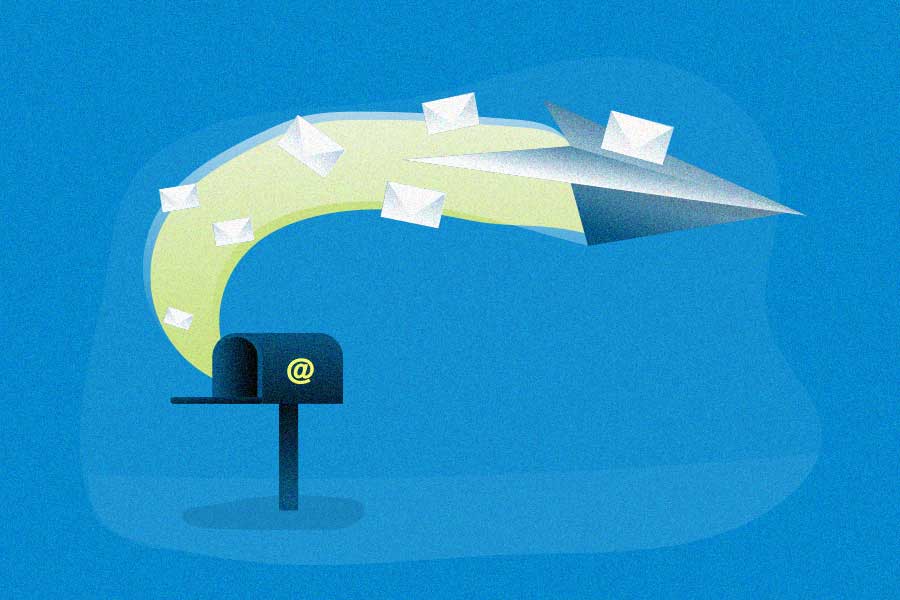How do you know if customers truly love your product and customer service? Conducting customer satisfaction research (essentially, gathering customer feedback) is key.
But how do you conduct customer satisfaction surveys in a way that reveals exactly what customers think of your brand?
We turned this question over to the experts, and gathered 20 proven tips and strategies.
1. Always use the same base survey question
“If you want to be able to measure customer satisfaction over time, then I recommend using the same base question set each time you conduct your surveys. That way you can create a starting benchmark.” Alex Membrillo, Cardinal Digital Marketing Agency
2. Survey customers when they’re already engaged with you
“The easier, the better for customer engagement with satisfaction surveys. So try to catch them while they are already engaged, as they’ll be unlikely to return if doing something else.
“For example, adding a survey to the end of a phone service is more likely to see results, rather than sending them an email later in the day when they’ve moved on.
“If you want more generic customer satisfaction feedback, I advise doing it through whichever e-marketing tool you use because this is where most of your engaged consumers will be.” –Daniel Foley
3. Survey customers after every purchase
“The best way to conduct research is through surveys. Survey customers online or in-store, after every transaction. It’s the most cost-effective way to get insight into your customer’s behavior.
“Make your survey’s short and ask questions that are relevant to their experience with your brand. It will give you accurate results that can help your business.” –Dennis Bell, Byblos Coffee
4. Check in with customers shortly after they receive your product
“While analytics and other data can give us insight into how a customer feels about a certain product, only customer surveys can tell us the customer’s emotional response to the product.
“My number one tip for sending out customer surveys is to do it promptly. Customers almost always will use a product immediately after receiving it. At this point, their emotions are fresh and you’ll be able to get their true feelings about your product. The longer you wait, the more your answers will be skewed.” –James Major, Insurance Panda
“Have a consistent plan and procedure in place for following up with customers after they’ve received their product. Be very forthright and clear that you want their honest and open feedback, including anything positive or negative. That will help you improve for them and for others in the future.
“We have found that the more we stress that, the more customers respond and give us their true feedback. This allows us to see what matters most to our customers and where we fall short.” –Jacob Rosenberg, Tajima Direct
5. Keep customer surveys short
“Keep your surveys short and to the point. Never include more than four or five questions, and keep all of the questions multiple-choice, not open-ended.” –Jane Kovalkova, Chanty
“The rule when getting customer satisfaction responses is to keep it simple. People are busy. It’s unlikely your survey will make it to the top of their priority list, so keep the survey easily doable in a short period of time.
“You could use the Likert scale that rates things from positive to negative responses, or keep it to two or three simple but relevant open-ended questions that are easy to answer.” –Adam Korbl, Ifax App
6. Ask why customers chose you
“Find out exactly why customers chose your company. This can help you understand more about your customers, as well as why particular services are more successful than others.” –Andrea Loubier, Mailbird
7. Make questions specific but engaging
“Make your questions as specific as possible, but also try to make them fun. Surveys can be boring and take a long time to fill out, so make it more interesting for the customer.
“Pick questions that give you important data for your research, but also add some random ones to keep your customer entertained while filling out the form.” –Mikkel Andreassen, Dixa
8. Offer an incentive for giving feedback
“Incentivize. Consumers are overwhelmed by survey requests, so you have to motivate them with a reward. The best is two-fold: A small incentive for completing the survey, then the possibility of a larger prize via a random drawing.
“I created and coordinated a large amount of surveys when I helped run a travel club, and the response was always much greater when there was a reward attached, however small.
“I also discovered the level of interest in the survey topics was more intense when you showed appreciation for their time and thoughts by giving them a gift.” –Karen Condor, US Insurance Agencies
“Do not be afraid to ask your customers for their personal and honest feedback. Create an email campaign to follow up and ask for feedback. You can incentivize their feedback with a percentage off if they take your survey, or something along those lines.” –Suzanne Pope, Whiterock Locators
Moosejaw offers a $10 store credit for customers who complete their survey. Source
9. Ask for reviews shortly after a purchase
“The timing of when a business asks for reviews is very important. Ask for feedback soon after an interaction or purchase so customers remember the experience and write feedback that reflects their satisfaction.” –Golda Criddle, ReviewInc
10. Let customers give anonymous feedback
“Allow your customer to answer anonymously. Often, you’ll receive a more authentic answer. Customers may be more likely to be honest when they don’t have to provide their identity.” –Sergey Belous, UpFlip
11. Be transparent when sending surveys
“Do it transparently and openly. Don’t send customers cryptic links or emails with leading questions.
“Be up front and open. Tell them you’re conducting customer satisfaction research and would like them to be open and honest, as you’re looking to improve your services or products.” –Ben Walker, Transcription Outsourcing
12. Ask for feedback face to face
“My number one tip for conducting research on customer satisfaction is to do it face to face. People can hide behind their computer and either be too polite or way too harsh, so it can be difficult to figure out what caused any discomfort.
“The trick with face-to-face talks is not to be too formal or direct. Include it in a casual conversation and listen to what they say.
“Also watch their body language. Some people may be too polite to say something was not to their taste, but you can see someone’s body language change and that’s all you need.” –Shaun Taylor, Moriti Safaris
13. Personalize requests for feedback
“Use personalization. We stay away from generic ‘tell us what you think’ emails. When the email is sent from a real person from the company, with a personalized subject line and certain questions to ask, people are more likely to respond and share what they think.
“We always ask specific questions, like ‘What do you think about us?’, ‘What difficulties did you encounter?’ and ‘How can we improve?’
“Yes or no is not an answer that can help with evaluating customer satisfaction. There is always more behind it, so we investigate to serve our clients in the best possible way.” –Maria Saigatova, Blast Sourcing
14. Recognize every survey response you receive
“Follow up with each response you get, even if it’s just a simple email. Customers will not continue to provide feedback if they don’t feel like they are being heard.” –Cori Pearce, ChurnZero
15. Pay attention to frequency of product/service use
“It’s all in the data. Even if a customer appears to be happy and engaged, but they don’t continue using your service, product, or solution, then they obviously weren’t satisfied.” –Thomas Bolt, Big Eval
16. Examine how competitors research customer satisfaction
“Don’t forget to do some competitive analysis. It would also be advantageous to know how your competitors run their customer satisfaction research. It’s completely ethical, and you get to learn a thing or two about them.” –Ben Walker, Transcription Outsourcing
17. Keep cultural differences in mind when using a scale survey
“Usually a customer satisfaction scale is from 1–3, 1–5, or 1–10. But because of cultural variations in how people perceive their happiness, a broader scale isn’t necessarily better.
“For example, a study in Social Research found that citizens in individualistic countries more often chose the more radical sides than those in collectivist countries.
“An American is more apt to rank a service as ‘amazing’ or ‘terrible’ than a Japanese person, for example, who would stick to ‘great’ or ‘unsatisfactory.’ Be mindful of such variations for an accurate picture. –Eliza Nimmick, Tutor The People
18. Act on your research findings!
“A customer satisfaction survey is essential for collecting data on customer happiness. It helps you confirm what your customers like, dislike, or what they would like to see improved.
“The fastest way to improve is by listening and then acting on what your customers really want. Businesses should focus on creating and reinforcing positive experiences through surveys in order to retain existing customers and add new customers.” –Natik Ameen, Incrementors
19. Use gamification to encourage your CS team
“There are many ways to collect and interpret data when trying to assess customer satisfaction. But research is only as effective and useful as its implementation.
“Ensure customer satisfaction data is used to help your company’s employees increase future customer satisfaction by applying gamification. After all, if the data does not improve employee motivation, which leads to better customer service, why collect and analyze it in the first place?” –Natalya Bucuy, LiveHelpNow
20. Pay attention to the right KPIs
“Using customer feedback as a marketing tool can maintain customer loyalty, increase word-of-mouth marketing, and positively impact your profit margins.
“Whereas some companies only nurture leads up until the point of purchase, delighting customers post-purchase is at the core of the inbound marketing methodology. Keep your customers in the delight stage by knowing which marketing KPIs bring you closer to your customer service goals.” –Jen Lawrence, Vye
Wrapping up
Now that you’ve learned how the experts gather customer feedback, it’s time to apply their advice and conduct your own customer satisfaction research.
But what questions should you ask, and what research methods should you use? Experts shared their insights in this roundup.

![How to Create Customer Satisfaction Surveys [20 Expert Tips] 1 moosejaw survey reward email](https://referralrock.com/blog/wp-content/uploads/2020/12/pasted-image-0-4.png)



